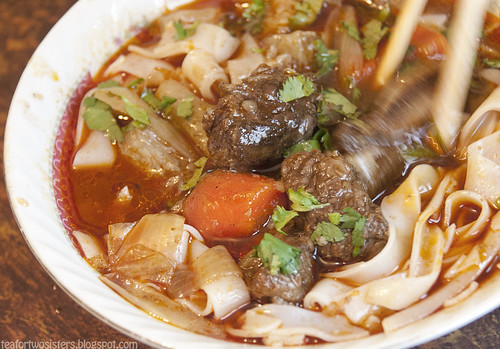
You’re looking at a hot bowl of Vietnamese beef stew, bo
kho, with rice noodles, glistening by the kitchen window.
Earlier this week, it began with some spare ribs, this spice blend (made
of paprika, star anise, garlic, chili, onion, ginger and cloves), lemongrass, star anise, cloves, fish sauce, onions, garlic and water.
Everything simmered together in a pot for about three hours.
Carrots were added afterwards. Chunks of daikon and beef tendons were cooked
separately from the pot of bo kho before they finished cooking in the bo kho.
While some people like to eat carrots and daikon when they
become an over-cooked mush, I like them before they get to that point. And so I fished
out the carrots, daikon, and all of the beef tendons into a smaller pot.
When the pot of bo kho was simmering away, two packages of wide
rice noodles were soaked in cool water. It only took an hour for the noodles to
soften up and turn opaque (see photo above). This quickens the cooking process and gives the
noodles a great texture. We like using the rose brand and elephant one because they don't break apart easily when you eat them.
The stew was seasoned with Chinese chicken bouillon powder, sugar, and salt. Not
much was needed though. A slurry of flour and room temperature bo kho was
stirred into the pot to tighten up the stew. There was quite a bit of oil
floating over the stew. Solution? Give the top of the soup a few gentle swirls
with a ladle and scoop out the bo kho.
When we were ready to eat, a pot of water was boiled to cook
the rice noodles, and the pot of bo kho was heated to a gentle simmer. The
soaked rice noodles didn’t need more than ten seconds in the boiling water. In our family, we put together our own bowls because we all have different tastes. Being super picky has nothing to do with it.
The rice noodles were cooked first. I like to cook mine for,
literally, two seconds and then press the cooked rice noodles with the back of
the ladle to drain excess water. By doing this, you'll prevent watering the stew (or soup) down. Some beef tendons, carrots, daikon, and chunks
of tender beef topped the rice noodles.
Ladles of bo kho and a sprinkle of cilantro completed the
bowl.
Andrew’s bowl had a little bit of everything; beef, daikon,
carrots, beef tendon, onions, garlic, and cilantro. It looks like he had too
much noodles.
The Vietnamese beef stew wasn’t thick enough to earn the
name stew, but it was fine when we ate it with rice noodles. If we ate it with
bread, the bo kho needed to be much thicker. The flavour was so complex. With each bite, flavour waves of coves, anise, lemon grass, ginger, beefy
richness and bright cilantro greeted our taste buds. It was beautiful.
Me: The beef and vegetables were so tender...
You: How tender was it?
Me: They were so tender that you can eat it without using dentures. Ang!
Instead of eating it with rice noodles, she was in the mood to mop up all the bo kho with some bread. If we had loaves of french bread, I would’ve probably had two small bowls of bo kho. Mmm... french bread.
You: How tender was it?
Me: They were so tender that you can eat it without using dentures. Ang!
Instead of eating it with rice noodles, she was in the mood to mop up all the bo kho with some bread. If we had loaves of french bread, I would’ve probably had two small bowls of bo kho. Mmm... french bread.
Regardless of how the bo kho was eaten, everyone happily slurped
their bo kho away. Only empty spice-speckled bowls and spoons remained.
We had a bit left over. Most of the fat was skimmed off before the bo kho was reheated for breakfast. It was my kind of breakfast. What a
great way to start off a day!
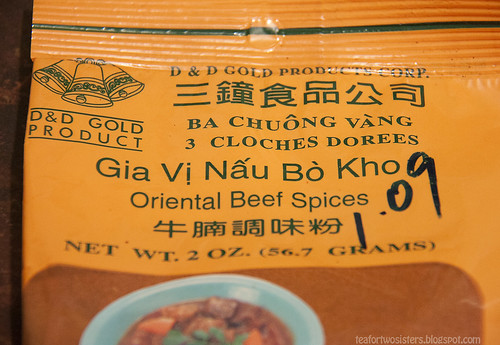
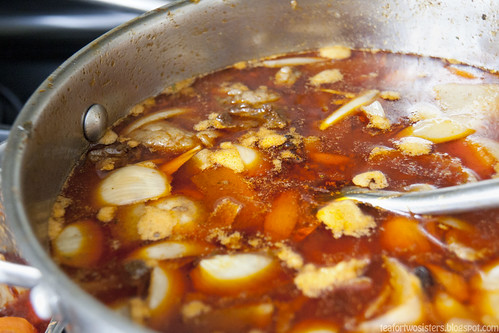
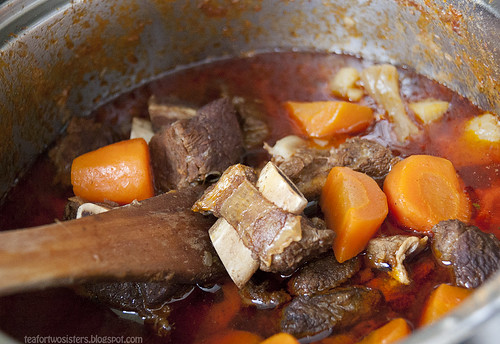
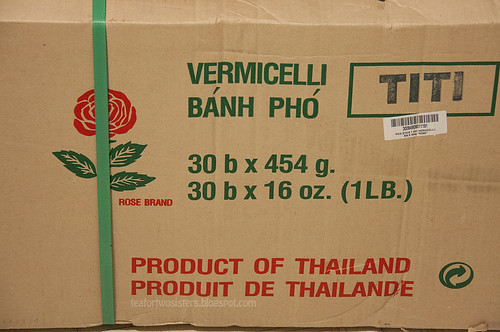

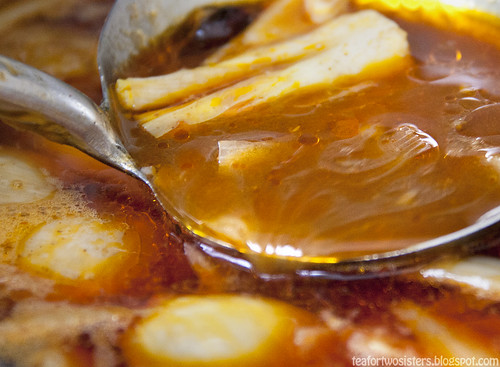
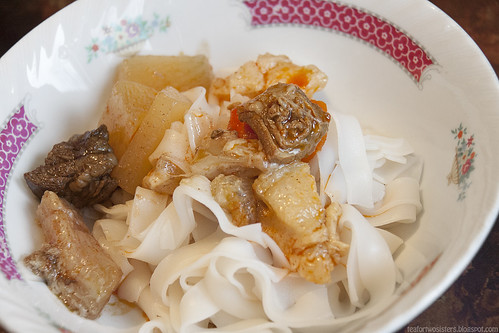
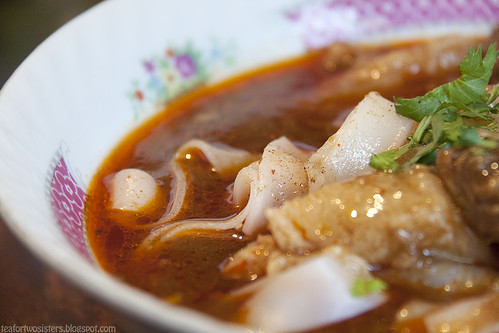
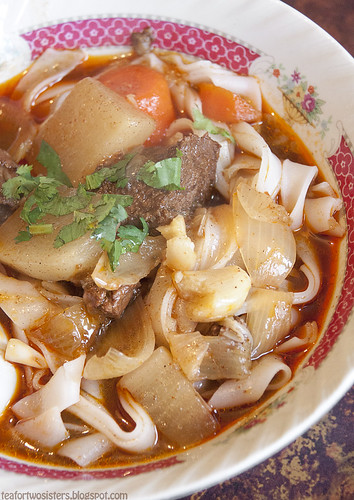



No comments:
Post a Comment
We'd love to hear your thoughts!